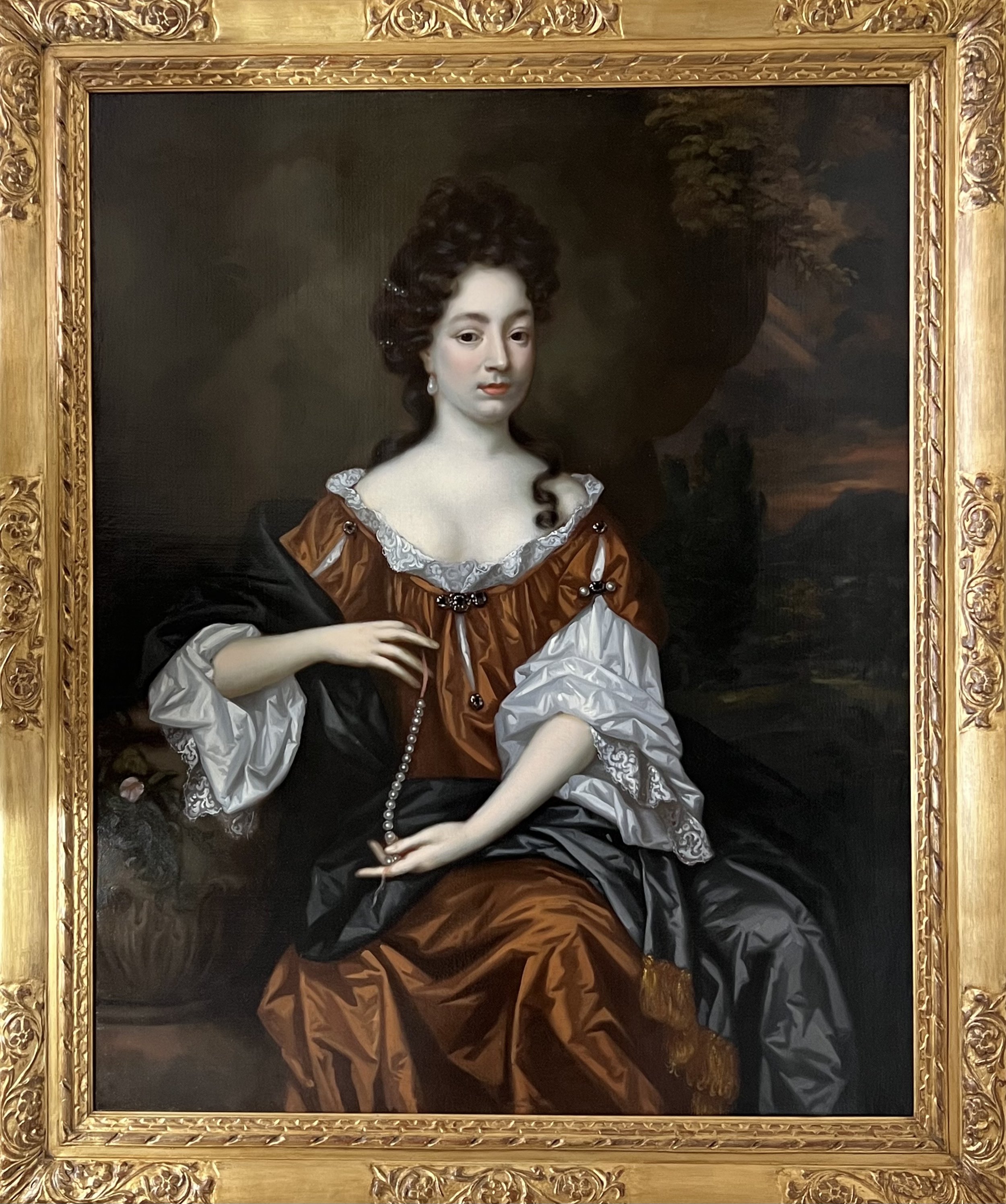
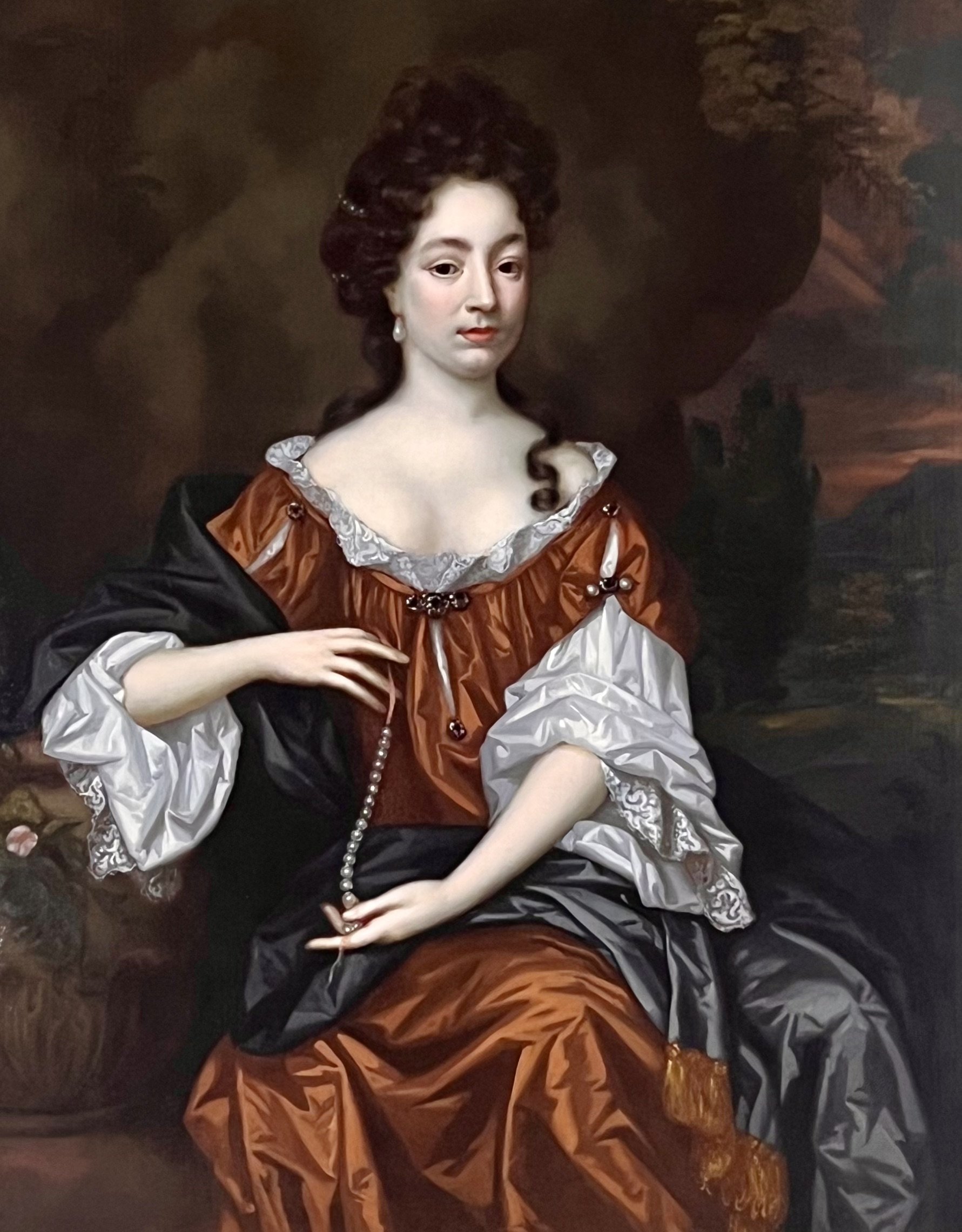
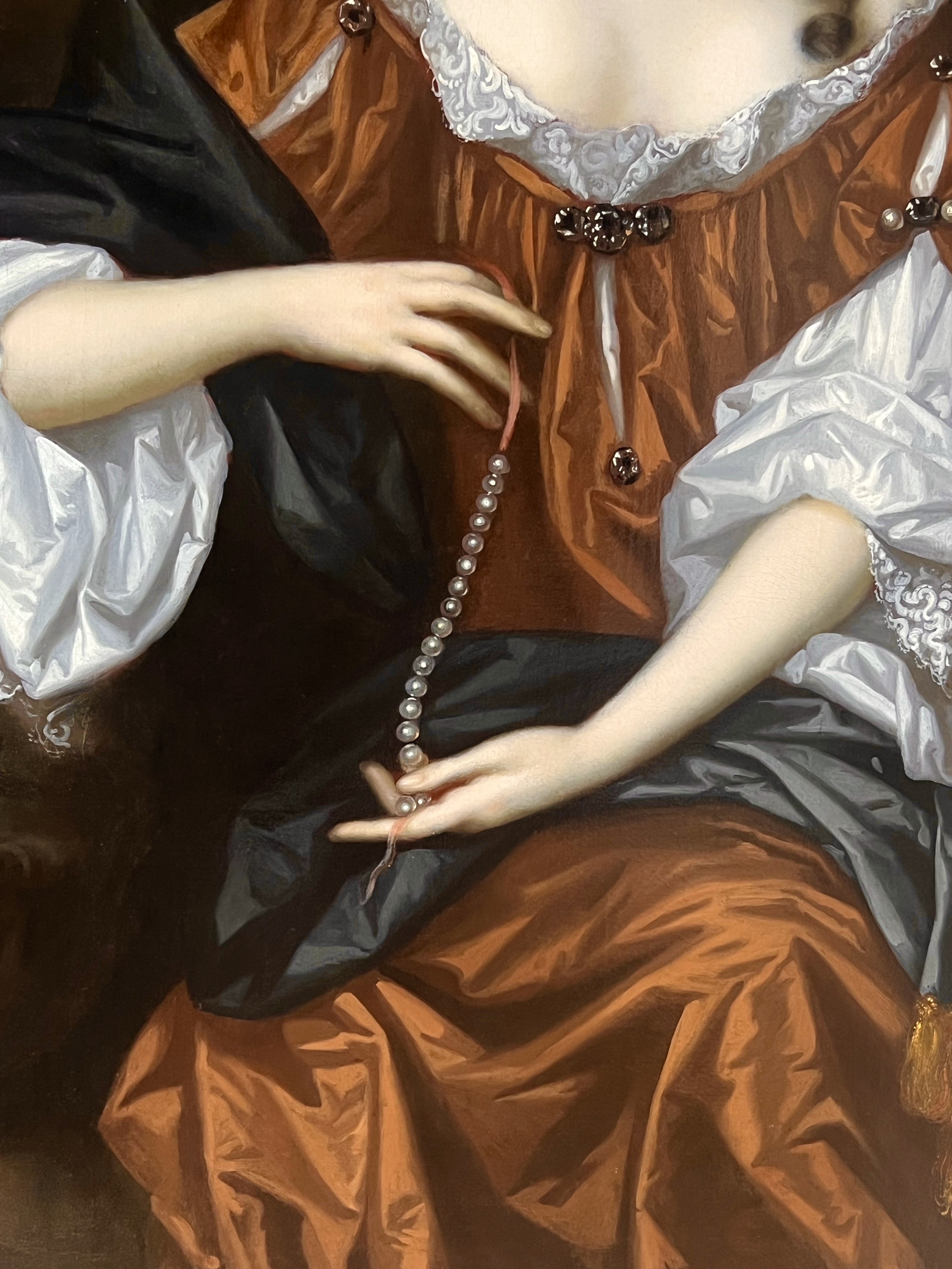
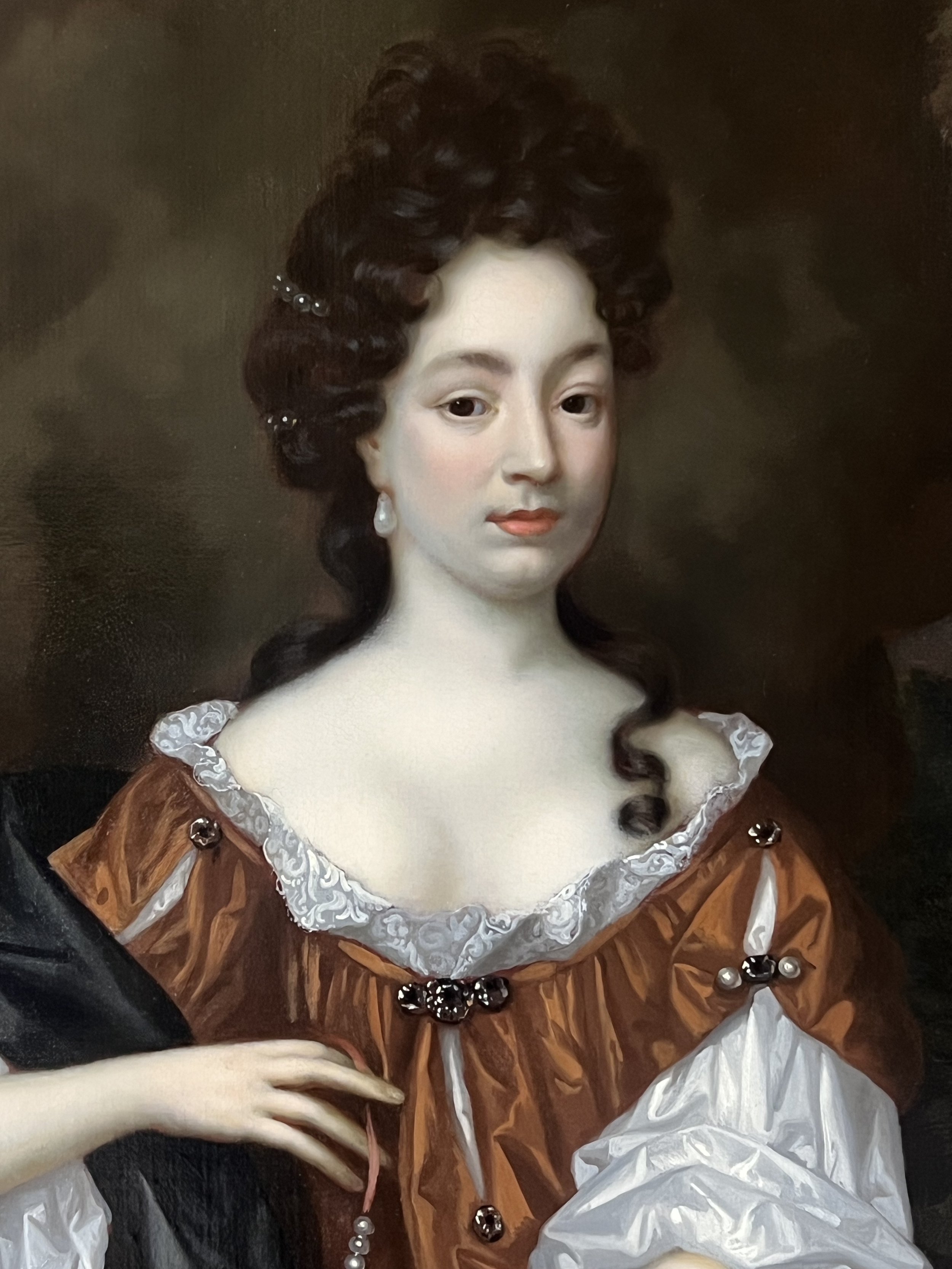
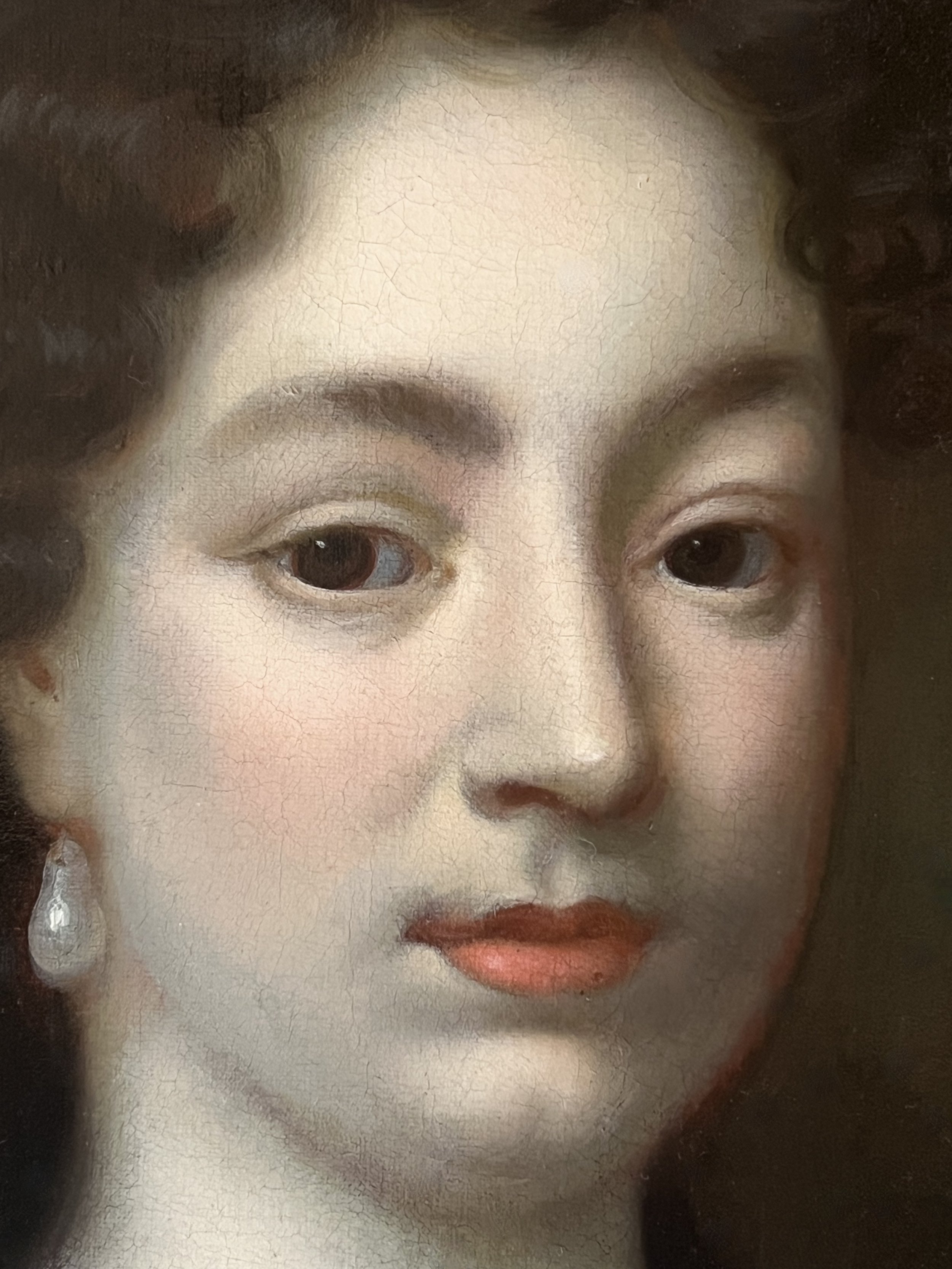
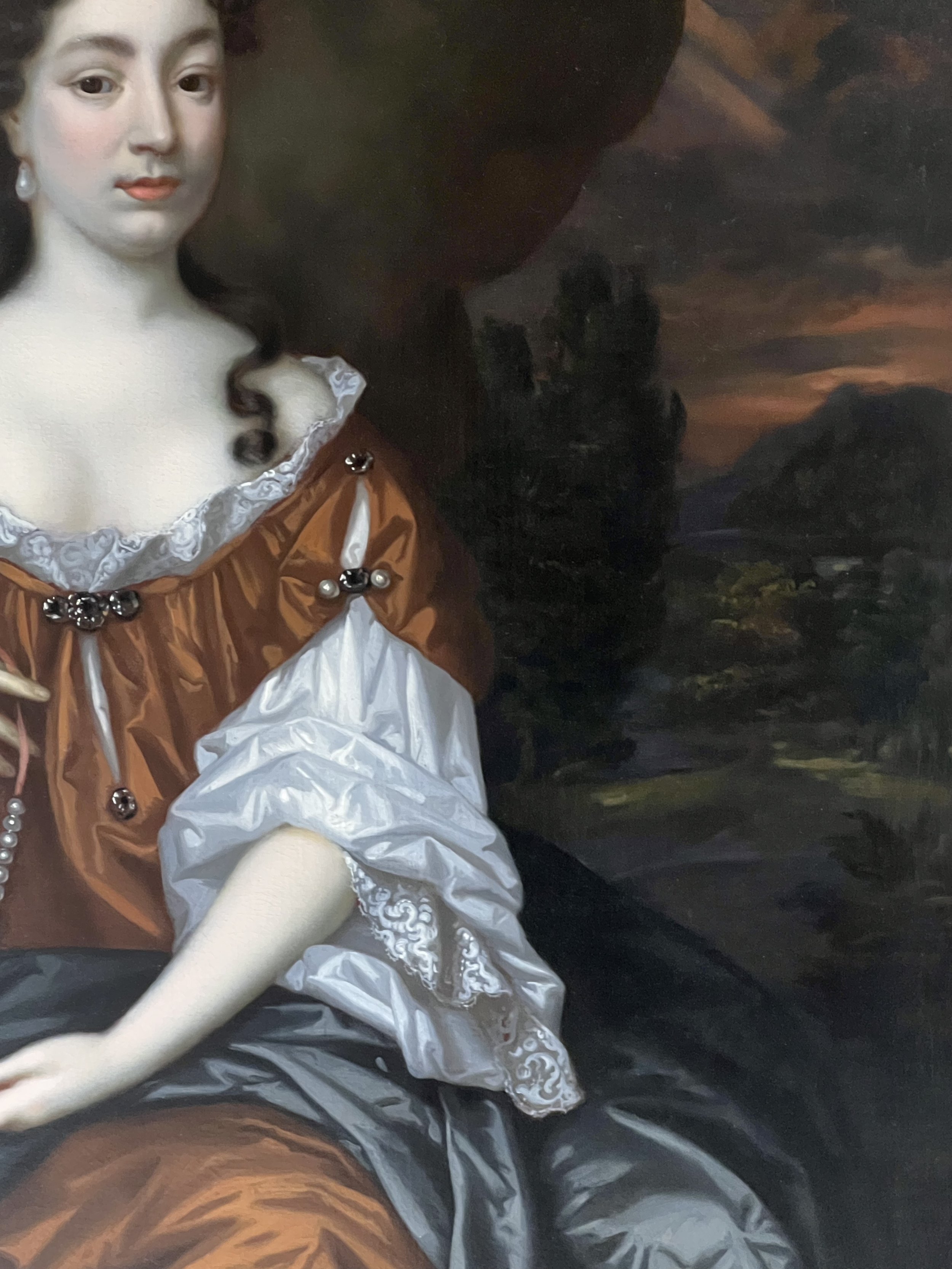
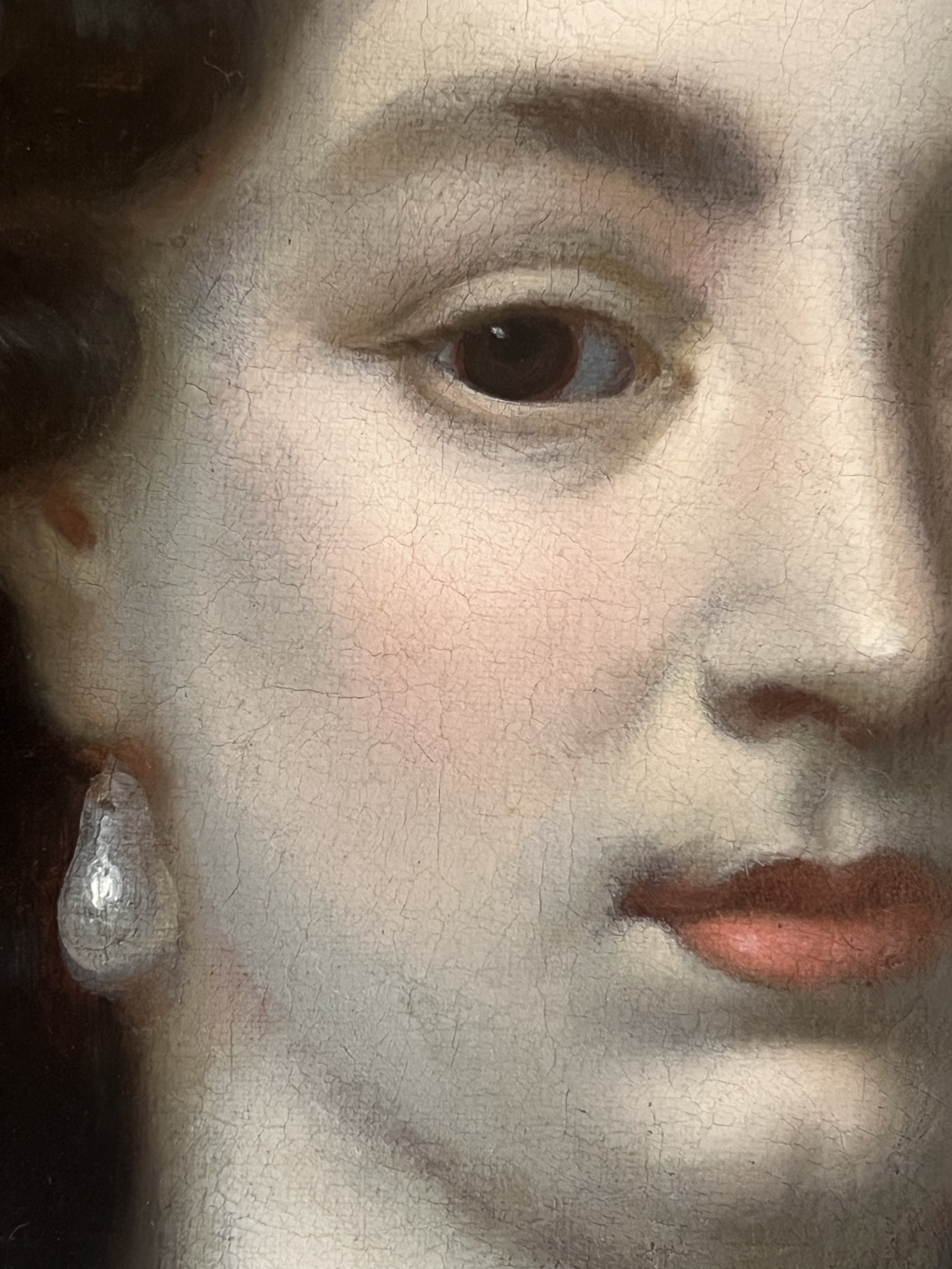
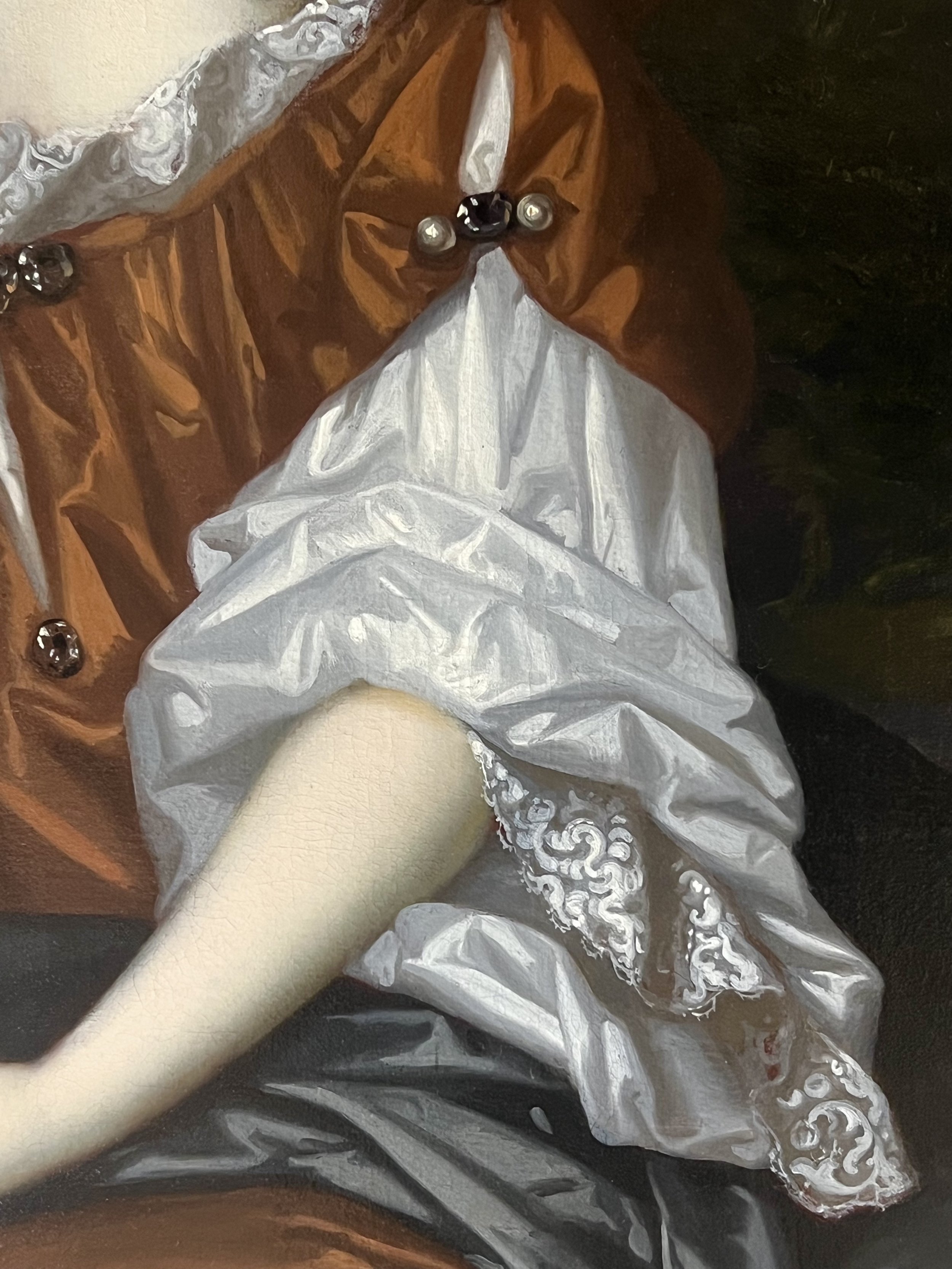
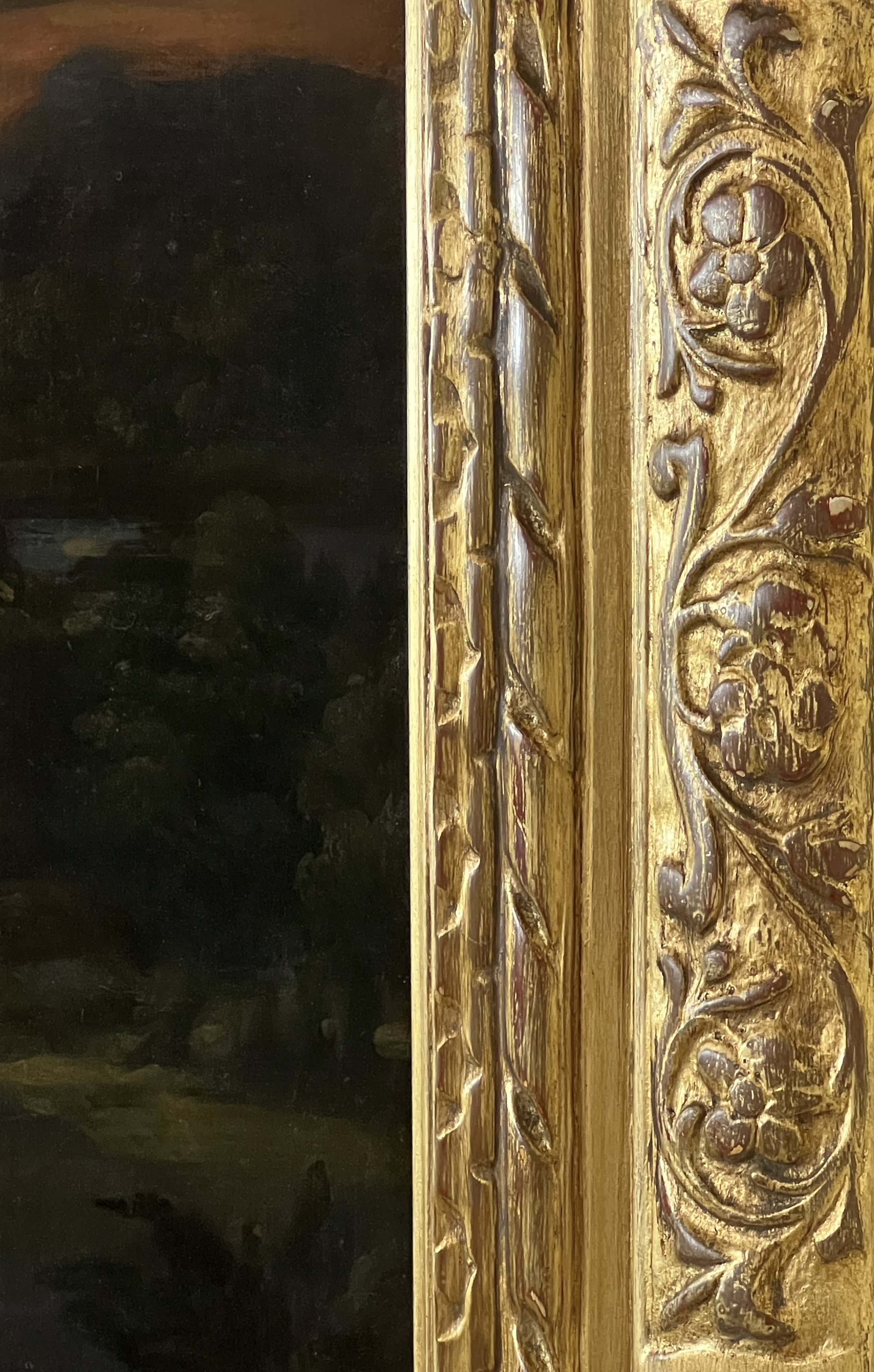
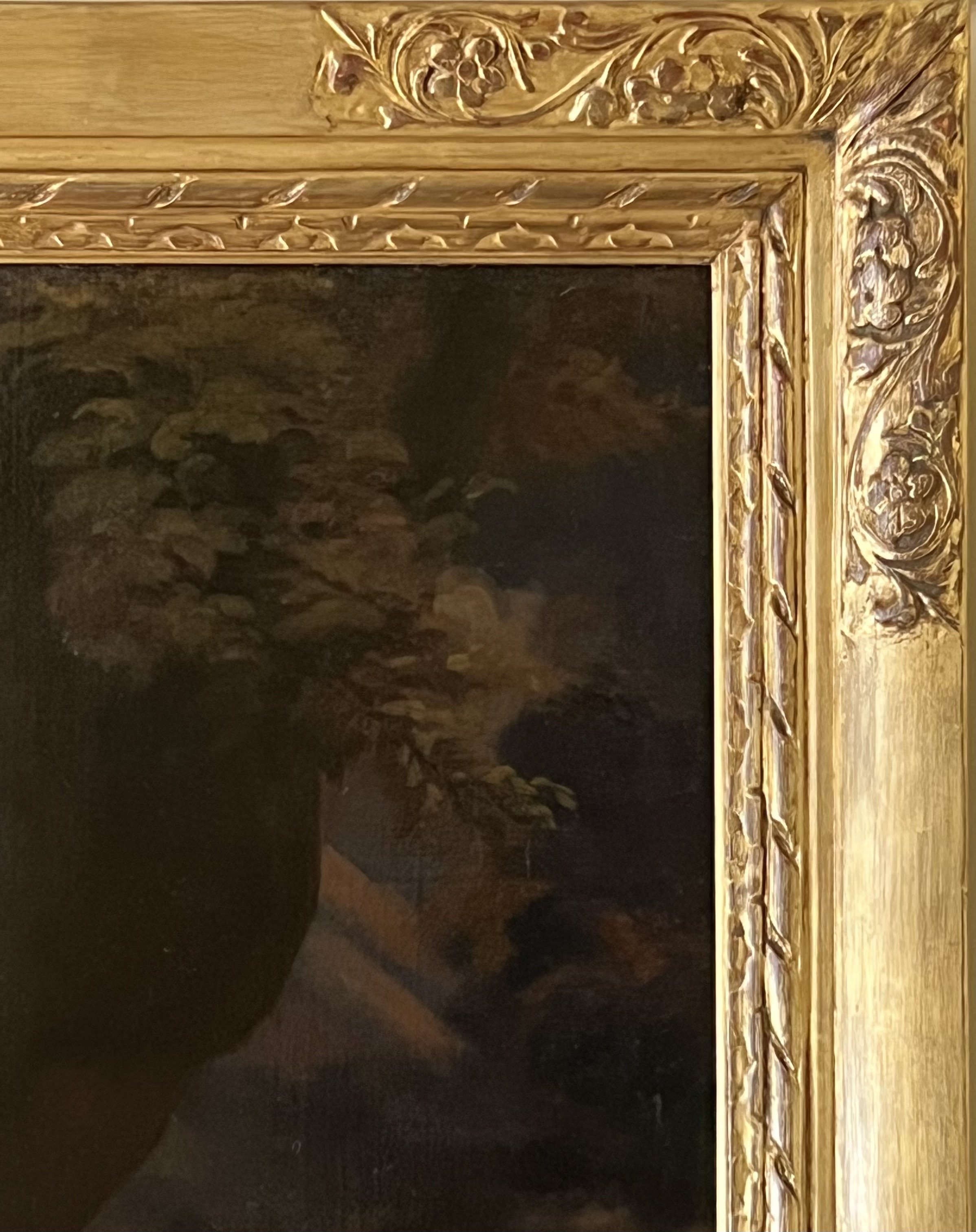

17TH CENTURY ENGLISH PORTRAIT OF A LADY c. 1670 - CIRCLE OF WILLIAM WISSING (1656 - 1687)
A fine, rare and large scale 17th century portrait of an elegant raven-haired beauty by an artist in the circle of William Wissing.
The noble sitter (traditionally identified as Louise de Kérouaille, Duchess of Portsmouth) is depicted three quarter length seated upon a bank in front of a rocky outcrop with an extensive wooded valley landscape beyond.
She appears delightfully deshabille, expensively dressed in the high status and fashionable brightly coloured silk clothing of the period. Gold or saffron coloured robes such as the one worn by our sitter were extremely fashionable and costly, Her white chemise is trimmed in lace and her costume has a low and wide neckline that reveals her décolletage, it also has jewelled fastenings
To complete the look her hair is worn in curls, some of which are piled vertiginously atop her head, whilst others cascade naturalistically around her bare shoulders. It is also worth noting the expressive use of the sitters lower arms as a focus of attention and site of erotic appeal, as she caresses a glistening string of pearls between her fingers.
Throughout the 17th century there was a thriving trade in pearls, which were transported from Asia to Europe. The Golf of Manner (between South India and Sri Lanka) was one of the pearl diving hotspots of the period. Divers would weight themselves with heavy stones to plunge into the depths, and they often had to retrieve as many as 1000 oysters before they discovered a single pearl.
With her jewel studied dress, pearl hair ornaments, earrings, and necklace, it his clear that this noble lady had wealth in abundance.
William Wissing (1656-1687) Willem Wissing, known in England as William Wissing, was a Dutch portrait artist who worked in England. He was born in either Amsterdam or The Hague, and studied at The Hague under Willem Doudijns (1630–97) and Arnoldus van Ravestyn (1615–90). In 1676, he moved to England, where he studied with and assisted Peter Lely. After Lely's death in 1680, Wissing emerged as his most important pupil. Godfrey Kneller was the only contemporary portrait artist in England to rival Wissing. Wissing’s royal sitters include Charles II of England, Catherine of Braganza, George of Denmark and James Scott, 1st Duke of Monmouth. In 1685, James II of England sent Wissing to the Netherlands to paint portraits of his Dutch son-in-law and daughter, the future William III of England and the future Mary II of England.
These portraits were often repeated; versions are on display in the Great Hall of the Wren building at the College of William and Mary in Williamsburg, Virginia. Wissing died in 1687 at the peak of his fame as a portrait painter, at Burghley House, the home of John Cecil, 5th Earl of Exeter near Stamford in Lincolnshire. Some suspected he was poisoned out of jealousy of his success. According to Arnold Houbraken his epitaph was "Immodicis brevis est aetas", meaning: "Brief is the life of the outstanding". He was buried in St Martin's Church, Stamford, Lincolnshire.
This sensual and sensitively characterised work is in an excellent state of conservation and is offered ready to hang in a carved and gilded ‘Lely style’ frame.
I am most grateful to Jacqui Ansell, Senior Lecturer, Christie’s Education for the detailed information and analysis that she has provided on fashion, costume and historical context.
Higher resolution images on request. Worldwide shipping available.
Canvas: 50” x 40" / 127m x 102cm. Framed:48" x 58" / 148cm x 122cm.
Price: £18000

